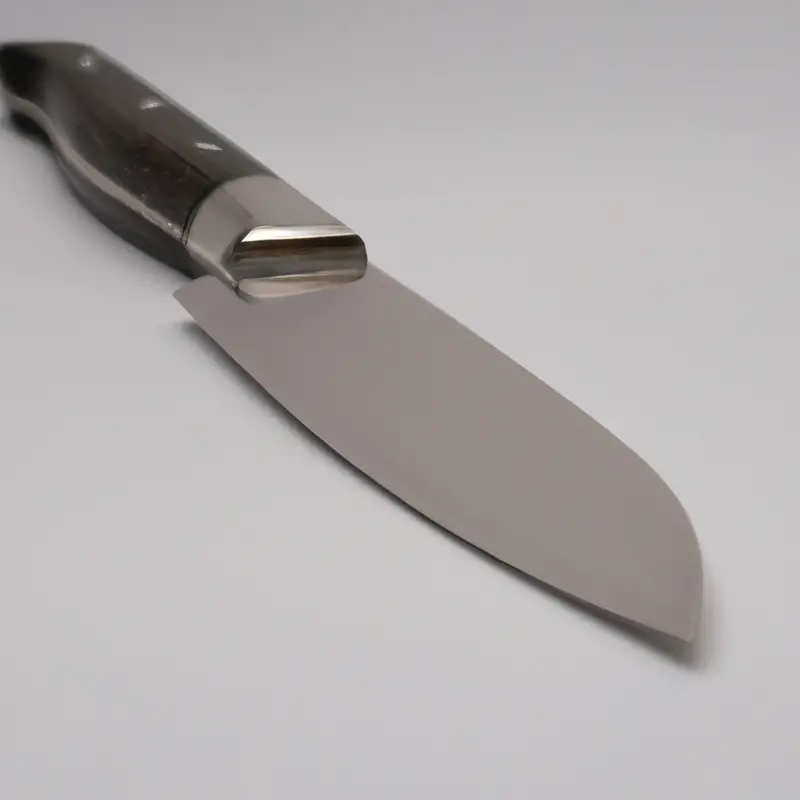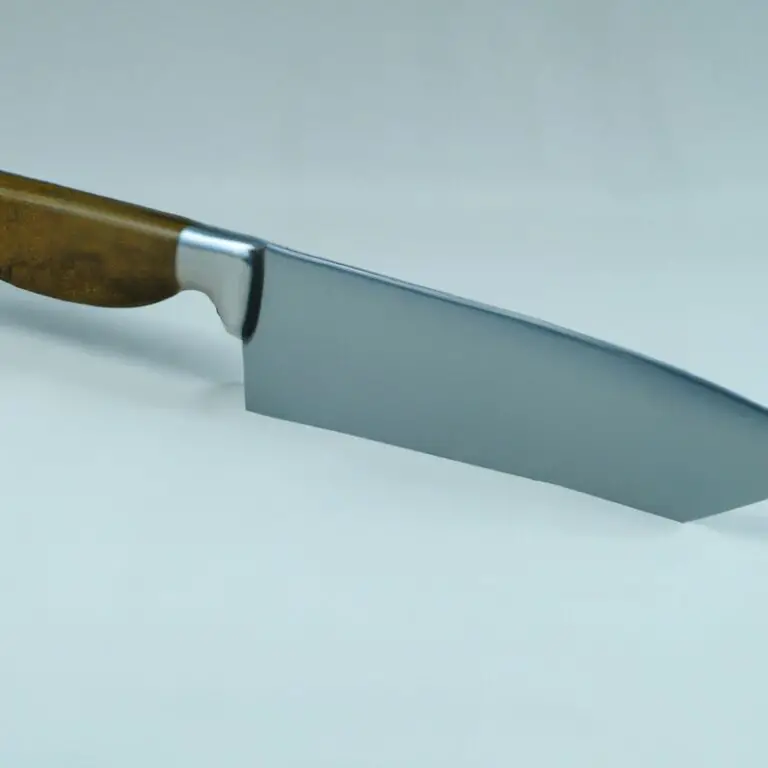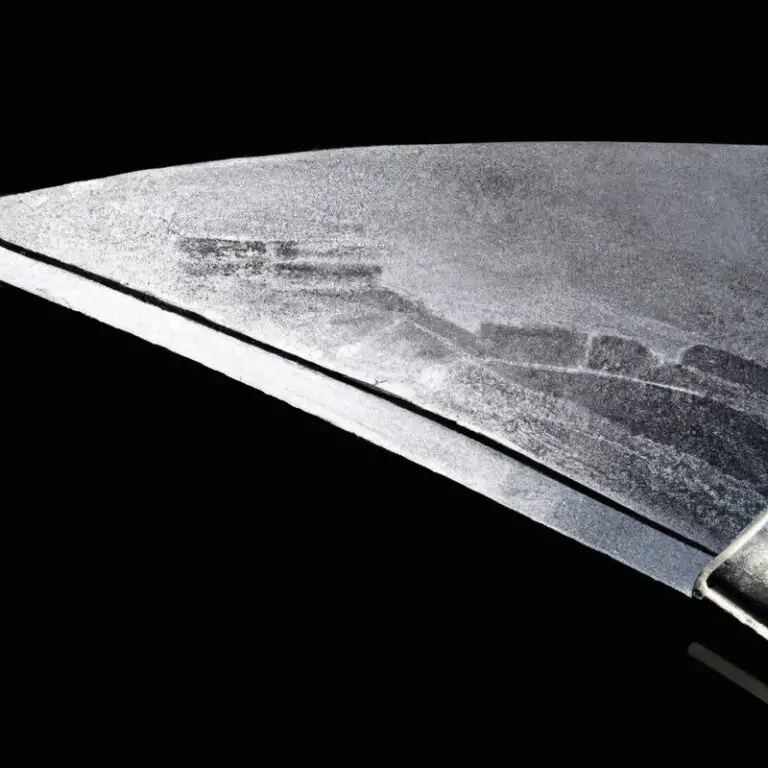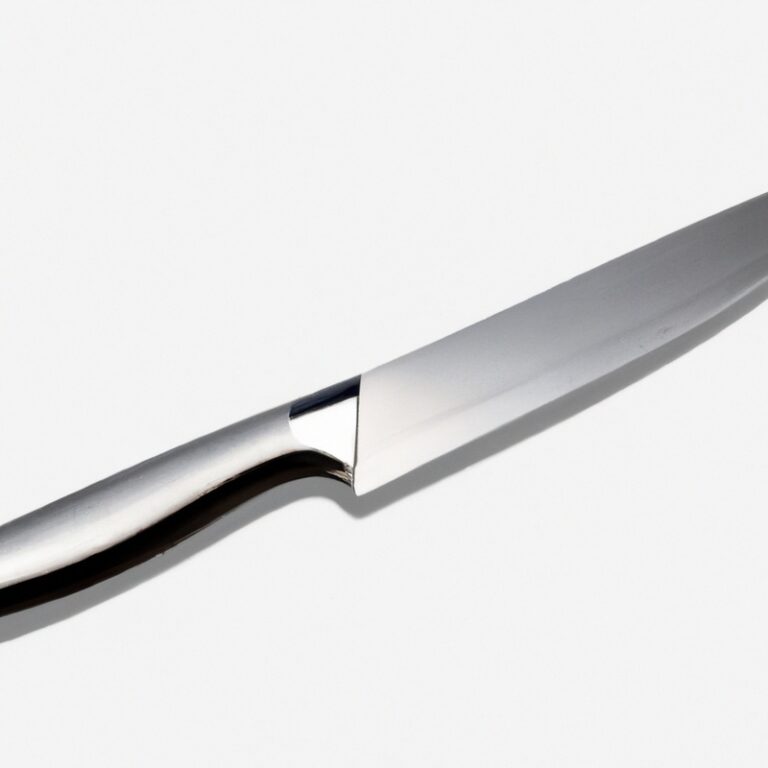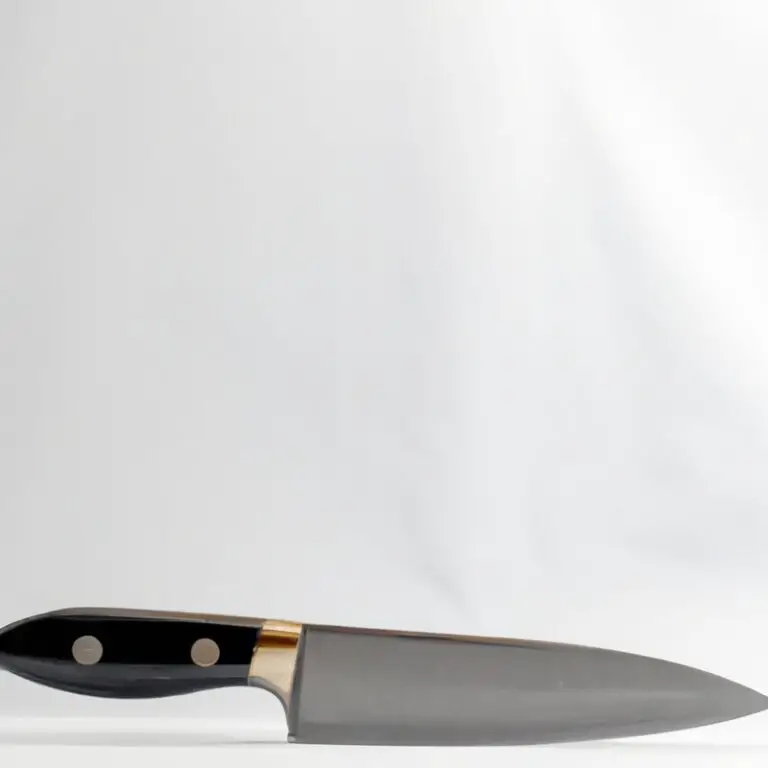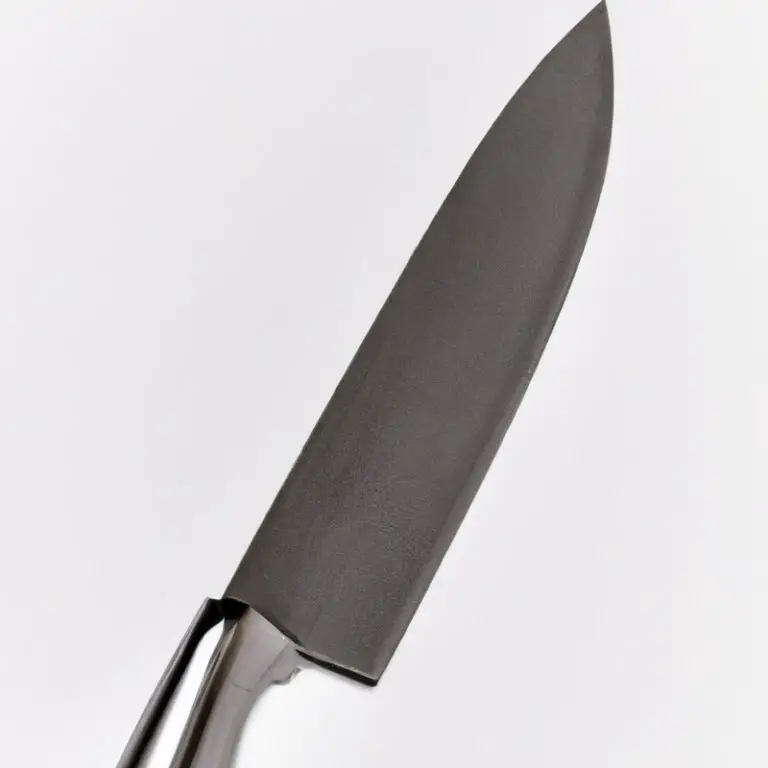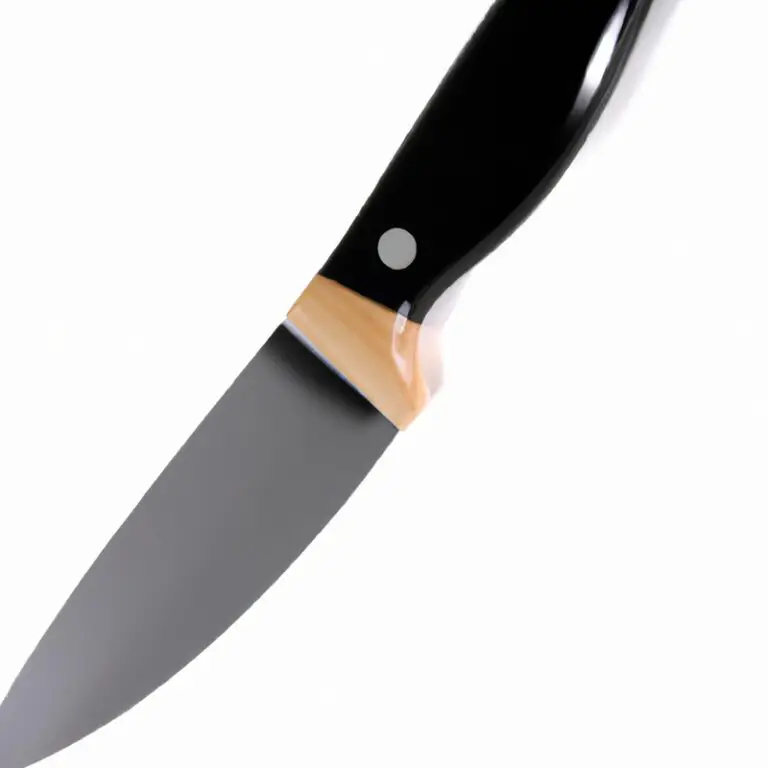What Is The Ideal Length For a Chef Knife?
Key Takeaways:
- A chef knife’s ideal length depends on the user and their preferences.
- A 8-10 inch chef knife is the most commonly used and versatile length.
- Longer knives have advantages for certain tasks like carving, while shorter knives are better for precision work.
- Ultimately, the ideal length is subjective and should feel comfortable and efficient for the individual user.
Have you ever wondered what the ideal length for a chef knife is? As a professional chef, I often get asked this question, and for good reason.
The length of a chef knife can significantly impact your cooking experience, from the efficiency of your cuts to the comfort of your grip.
In this article, I’ll break down the anatomy of a chef knife and guide you on how to choose the right length for your cooking style and ergonomics. We’ll also explore the pros and cons of longer and shorter knives and debunk the myth that longer blades are always better.
Ready to find your sweet spot?
Let’s dive in.
| Length | Pros | Cons |
|---|---|---|
| 8 inches | Great for slicing, chopping, and dicing Fits most hand sizes Good balance between control and power | May not be ideal for larger tasks like cutting through bone or large vegetables |
| 10 inches | Provides longer blade for bigger tasks Can easily cut through large vegetables or meat with bone More reach for slicing larger items | May be too large for some hand sizes Requires more control and strength |
Understanding the Anatomy of a Chef Knife: A Guide to Blade, Handle, and Tang Lengths
To understand what makes the ideal length for a chef knife, it’s important to have a basic understanding of the knife’s anatomy. A chef knife consists of three major parts: the blade, handle, and tang.
The blade is the sharp cutting portion of the knife, usually made of high-quality steel.
The handle is where the user grips the knife and is usually made of wood, plastic, or a combination of materials. The tang is the portion of the blade that extends into the handle, providing stability and balance to the knife.
Different lengths of blade, handle, and tang can impact the knife’s weight, balance, and handling.
It’s important to choose a chef knife based on your specific cooking needs and preferences.
Comfort is Key: How to Choose the Right Length for Your Chef Knife Handle
Comfort is Key: How to Choose the Right Length for Your Chef Knife Handle When picking a chef knife, the handle length is just as important as the blade length. The handle should fit comfortably in your hand and allow for a secure grip.
When picking a handle length, consider the size of your hand and how you grip the knife.
For those with smaller hands or a pinch grip, a shorter handle is recommended. Those with larger hands or a full grip may prefer a longer handle.
It’s essential to test different handle lengths before making a purchase to ensure maximum comfort and control.
A comfortable grip not only reduces hand fatigue but also improves accuracy in cutting and chopping tasks. Remember, the perfect handle length varies based on individual preference and should feel comfortable during extended periods of use.
Blade Length vs. Overall Length: The Pros and Cons of Longer and Shorter Chef Knives
Blade length and overall length are critical factors to consider when choosing a chef knife. Longer blades are perfect for tasks that require more cutting surface area and less repositioning; therefore, longer knives are ideal for handling big fruits and vegetables or carving meats.
On the downside, longer blades can be challenging to handle, and their weight can make the knife feel unbalanced.
Shorter blades, on the other hand, provide better knife maneuverability, making them perfect for intricate tasks such as peeling and filleting fish. Shorter knives also tend to have lighter weights making them more comfortable to use for longer periods.
However, shorter knives lack the power of longer blades, making them less effective when handling large ingredients.
In the end, the ideal length of a chef knife is dependent on personal preference and intended use.
The Sweet Spot: Finding the Optimal Length for Your Chef Knife based on Cooking Style and Ergonomics
The ideal length for a chef knife depends on your cooking style and ergonomics. For most home cooks, a blade length of 8 to 10 inches is the sweet spot.
This length provides enough surface area for chopping and slicing while remaining controllable for home kitchen tasks.
However, professional chefs who are in a commercial kitchen may require a longer blade length to cut through larger ingredients. Longer blades come with more heft and can be overwhelming for home cooks, but they offer more efficient cutting for bigger kitchens.
While blade length is important, ergonomics also play a vital role in choosing the right chef knife length.
The knife handle should fit comfortably in your hand, and the blade should not be so long that it is difficult to maneuver. A comfortable handle and balanced blade are crucial for preventing wrist and hand fatigue during long cooking sessions.
Overall, the optimal length for your chef knife is subjective and based on your unique cooking style and ergonomic needs.
Consider testing different blade lengths and handle styles to find the perfect fit for you.
From Chopping Vegetables to Carving Meat: Choosing the Right Chef Knife Length for Each Task
Choosing the right chef knife length for each task is crucial to ensure efficient and safe cooking. When it comes to chopping vegetables, a shorter blade length works best as it provides greater control and precision.
A length of 6 to 8 inches is ideal for this task.
On the other hand, a longer knife is better for carving meat. A length of 8 to 10 inches allows for smoother and longer cuts, ensuring that the meat remains intact.
Ultimately, the right length of your chef knife depends upon the task at hand and your personal preferences.
Is a Longer Blade Always Better? Debunking the Myth of Longer Knives for More Efficiency
Contrary to popular belief, a longer blade does not always equate to better efficiency in the kitchen. While a longer knife may appear more intimidating and may seem like it can handle larger tasks at first glance, it ultimately comes down to individual preference and the specific task at hand.
In fact, a longer blade may actually be more cumbersome and difficult to handle during precision tasks.
The ideal length for a chef knife varies depending on the user’s technique, comfort, and the type of ingredients being prepared. It is also important to note that a shorter blade can be just as effective if it is made from high-quality materials and designed with precision in mind.
When choosing a chef knife, prioritize quality and choose a blade length that feels comfortable and efficient for your individual cooking style.
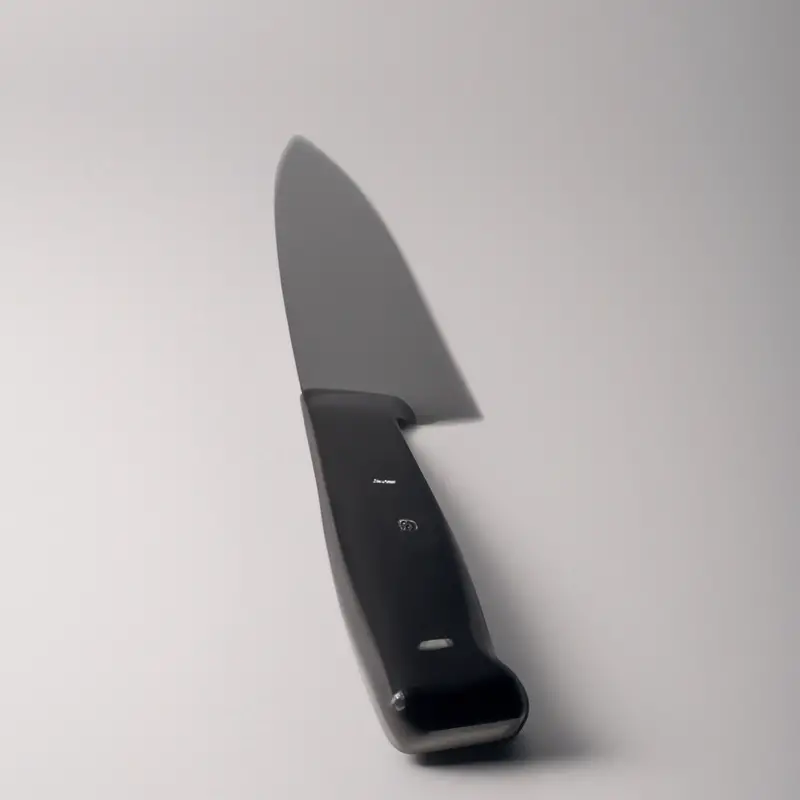
Blade Thickness and Width: How These Factors Impact the Ideal Length for a Chef Knife
Blade thickness and width can affect the ideal length for a chef knife. A thicker and wider blade can provide more stability and heft, making it suitable for heavier tasks.
However, it can also make the knife heavier and less maneuverable.
A thinner and narrower blade can be more agile and precise, but less suitable for heavy-duty tasks. Chef knives usually have a thickness of 1.5-3 mm and a width of 4-6 cm.
Ultimately, the ideal blade thickness and width depend on personal preference and intended use.
Balancing Act: How to Find the Right Weight and Length for Your Chef Knife for Better Control
When it comes to finding the right weight and length for your chef knife, balance is key. The weight of the knife should be evenly distributed throughout the blade and handle, allowing for better control and precision when cutting.
A heavier knife can provide more force and stability, but may be more difficult to maneuver.
On the other hand, a lighter knife can be easier to handle, but may not have the necessary weight to handle tougher ingredients. The length of the knife should also be considered based on the task at hand.
A longer blade can handle larger items and provide a wider cutting surface, but may be more difficult to control.
A shorter blade may be more manageable, but may not provide the necessary length for larger items. Ultimately, it is important to consider your personal preferences and cooking style when choosing the weight and length of your chef knife.
Try out different options and find the blade that feels most comfortable and provides the level of control you need for efficient and effective cooking.
Quality Over Length: Why Investing in a High-Quality Chef Knife Matters More than Its Length
Investing in a quality chef knife is more important than its length. A high-quality knife ensures that it will last longer, remain sharp, and provide better balance and control.
It is essential to invest in a chef knife made with durable materials, such as high-carbon stainless steel, to hold its edge and withstand tough use.
Cheaper knives may seem like an economical option, but they inevitably require frequent sharpening and replacement. Investing in a quality chef knife not only saves money in the long run but also provides a superior cutting experience.
Remember, the focus should be on quality, not the length of the blade.
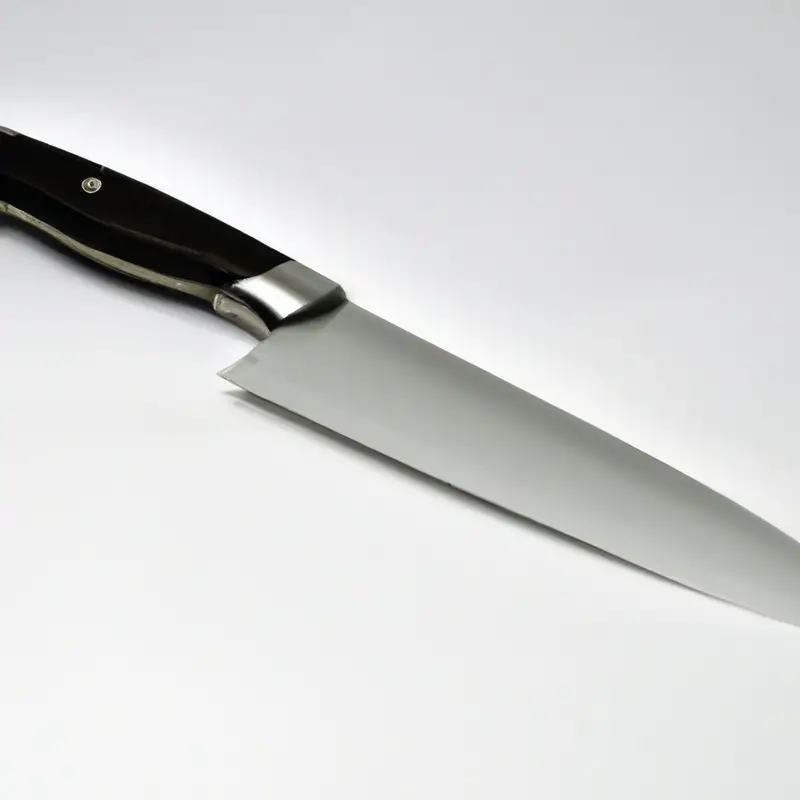
How to Care for Your Chef Knife: Maintenance Tips for Knives of All Lengths
Maintaining your chef knife is crucial to ensure its longevity and optimal performance. Here are some maintenance tips for knives of all lengths:
- Hand-wash your knife with mild soap and warm water, then dry it immediately with a clean cloth.
- Never put your knife in the dishwasher, as it can damage the blade and handle.
- Use a honing steel regularly to keep the blade straight and sharp.
- Sharpen your knife when it starts to feel dull, either with a sharpening stone or by taking it to a professional.
- Store your knife in a knife block or a sheath to protect the blade and prevent it from getting dull.
- Avoid cutting on hard surfaces like glass or stone, as it can damage the blade.
- Use a cutting board made of soft material like wood or plastic to preserve the blade’s edge.
By following these maintenance tips, you can keep your chef knife in top condition and extend its lifespan.
Final Verdict
Determining the ideal length for a chef knife is a complex decision that requires consideration of various factors, including cooking style, ergonomics, and personal preferences. While longer blades provide more efficiency, shorter ones offer better control and maneuverability, but the sweet spot lies in finding the optimal length that strikes a balance between these two aspects.
Additionally, the blade thickness, width, handle, and tang length all play a crucial role in determining the overall effectiveness of a chef knife.
Ultimately, investing in a high-quality knife, regardless of its length, is crucial for culinary success. Remember to care for your knife properly to ensure its longevity.
By following these guidelines, you can confidently select a chef knife that suits your needs and take your culinary skills to new heights.

